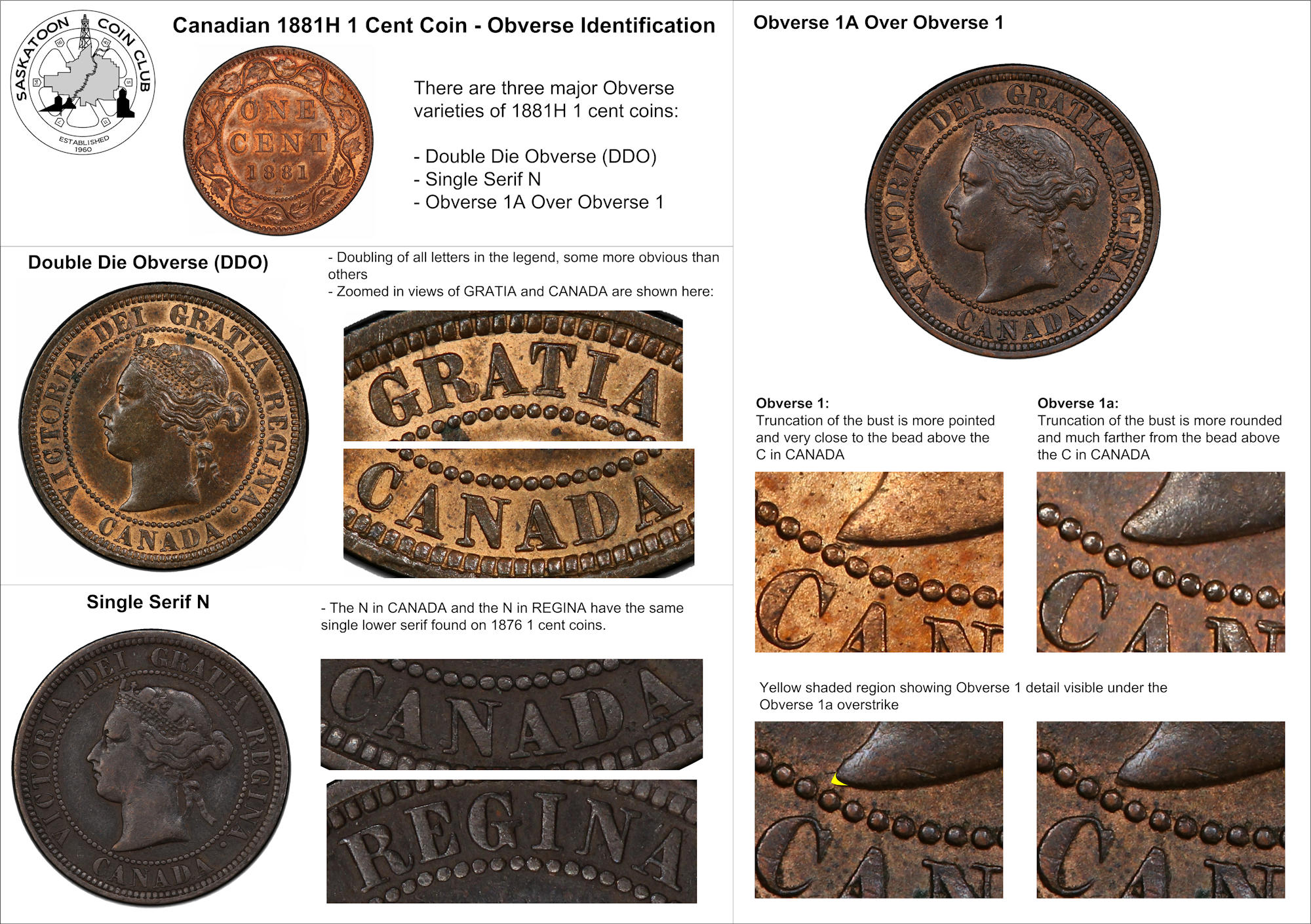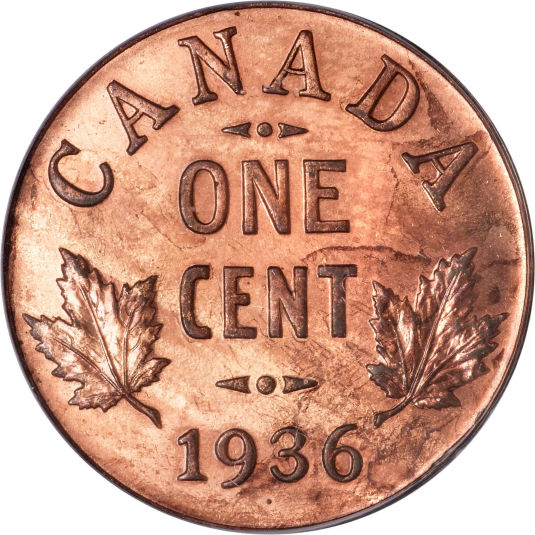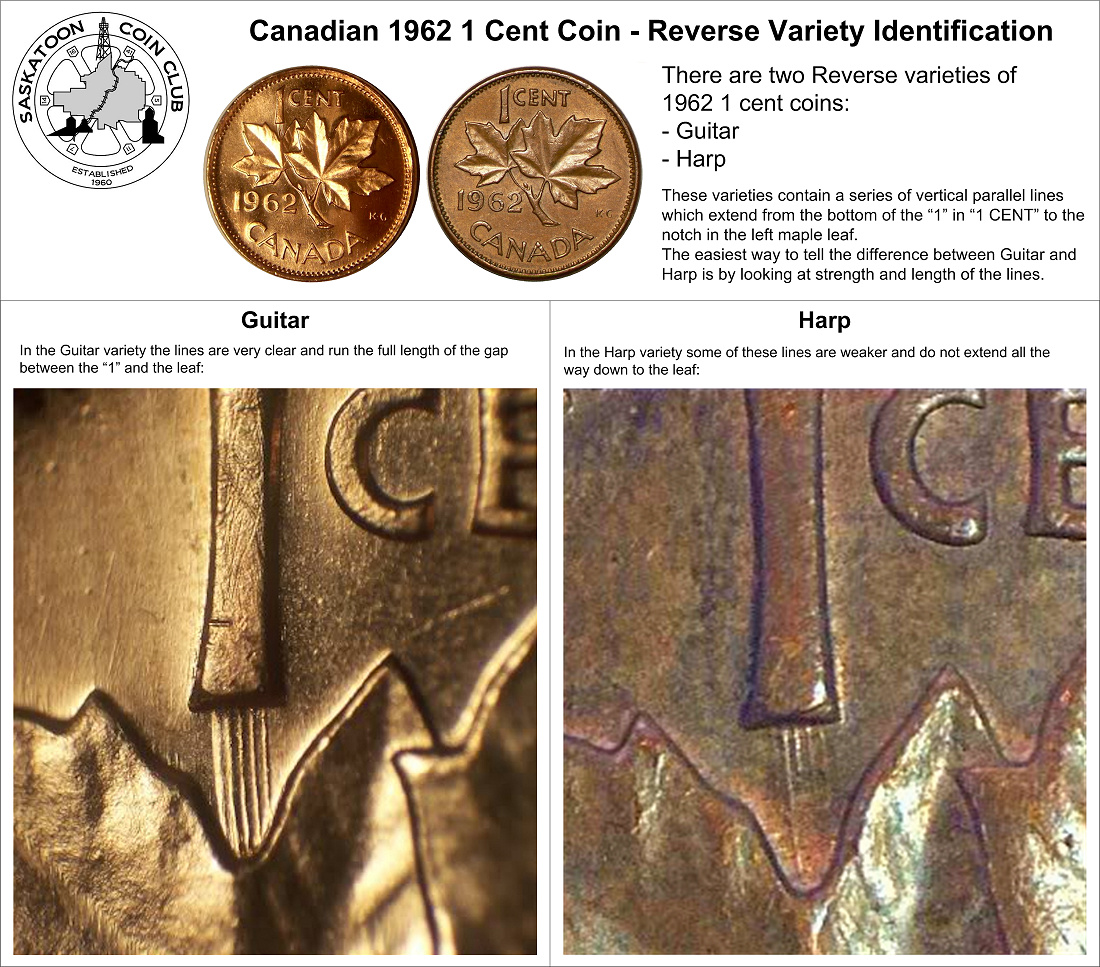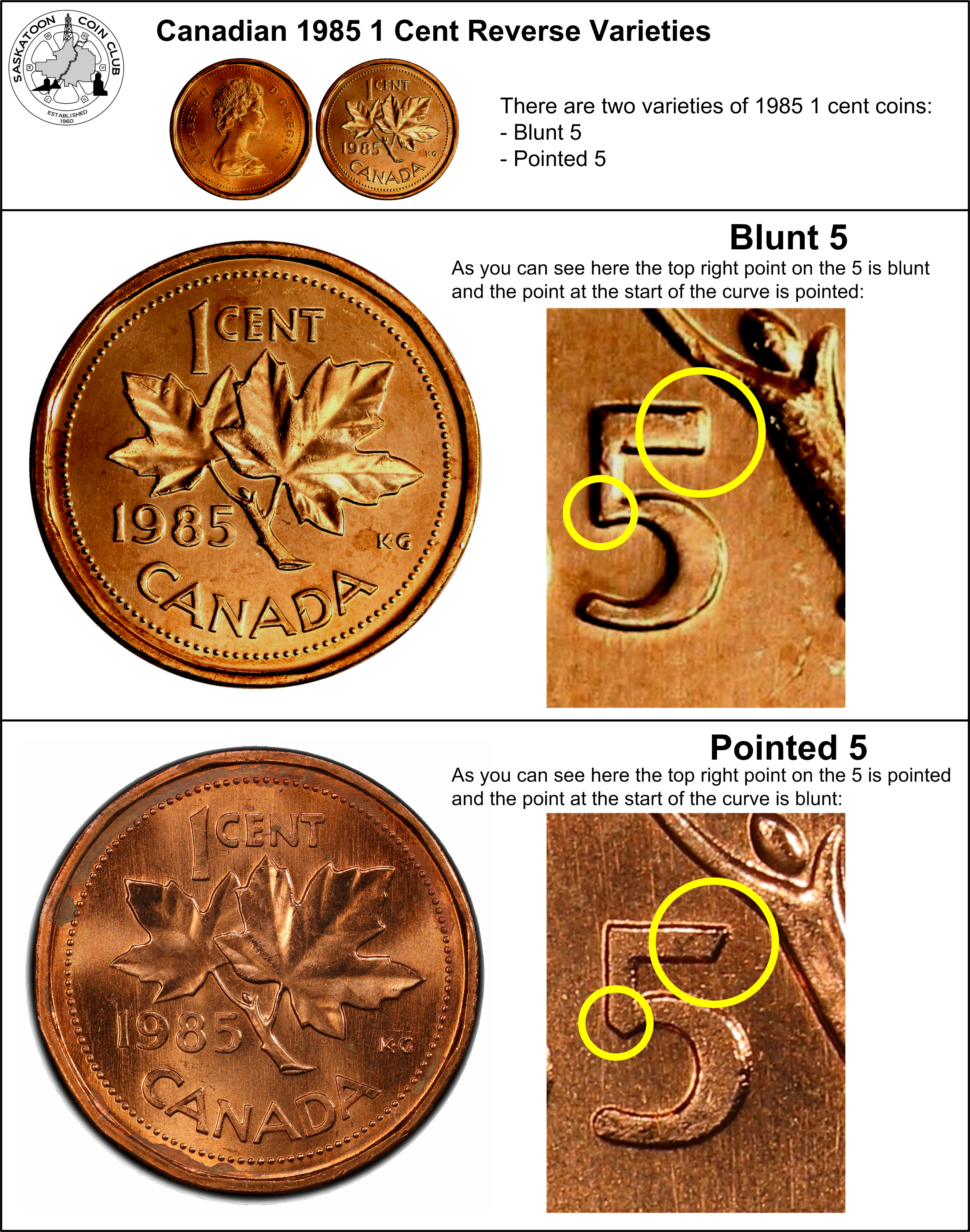1965 Varieties
There are two obverse varieties, as well as two reverse varieties. At some point in the production year each obverse die was used with each reverse die,
so as a result there are FOUR different variety combinations:
- Type 1: SB P5 ("Small Beads" obverse with "Pointed 5" reverse)
- Type 2: SB B5 ("Small Beads" obverse with "Blunt 5" reverse)
- Type 3: LB B5 ("Large Beads" obverse with "Blunt 5" reverse)
- Type 4: LB P5 ("Large Beads" obverse with "Pointed 5" reverse)
Obverse Varieties
There are two different obverse varieties:
Large Beads Obverse - The beads are slightly larger, and noticeably closer to the rim. Also, the "A" in "Regina" points to a rim bead.
Small Beads Obverse - In the small beads variety the beads are noticeably further from the outer rim of the coin. Also, the "A" in "Regina" points between two rim beads:
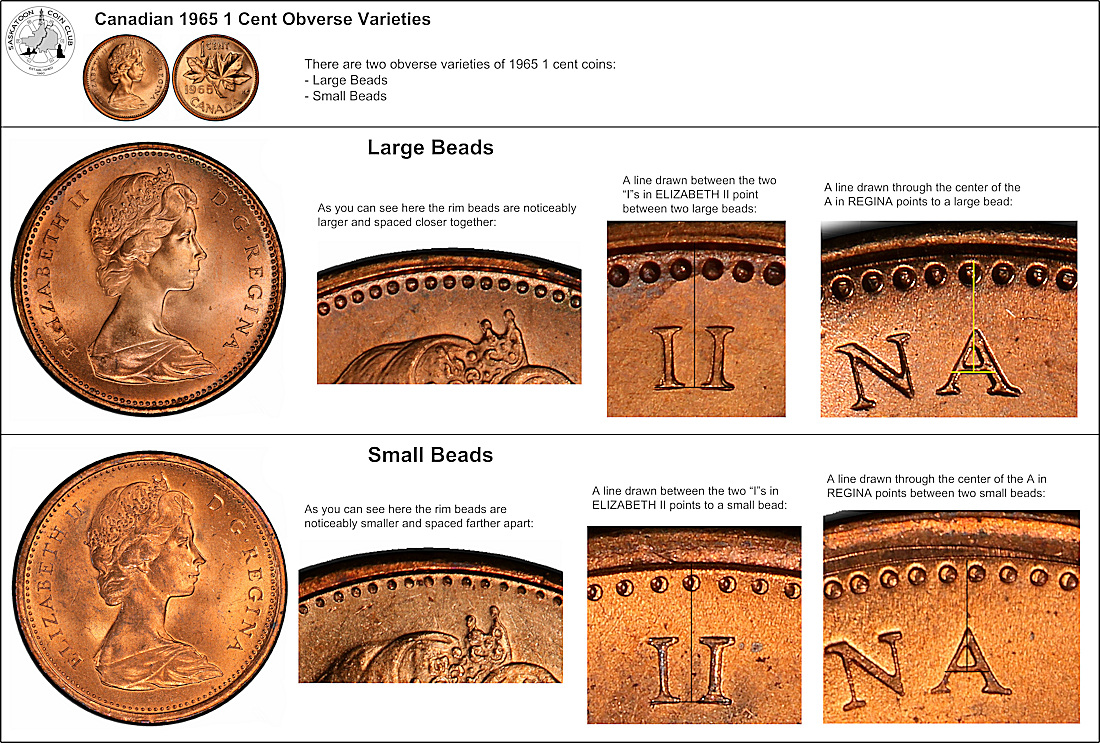
Reverse Varieties
There are two different reverse varieties: The top of the 5 in the date can either have a blunt end or a pointed end.

